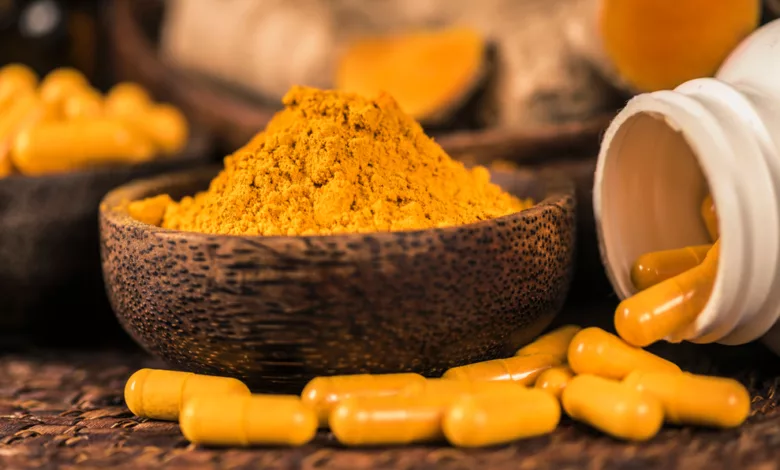Talk Turmeric to Me

The herb’s spin and benefits
Touted by some as a panacea for all ailments, the gold-hued spice turmeric has hit the mainstream in the United States.
People seeking healing benefits for a variety of conditions are turning to turmeric as an adjunctive therapy. And it’s popular at trendy cafes, where you’ve likely seen a “golden latte,” a special, turmeric-filled drink on the menu.
Though relatively new to the West, turmeric (Curcuma longa) — a plant in the ginger family native to India — has enjoyed enduring popularity for several centuries in South Asia as a cooking spice and in traditional Eastern medicine systems as a therapeutic agent. It even features in some Hindu religious ceremonies.
Thought to have anti-inflammatory and antioxidant effects, turmeric has been traditionally applied to wounds to fight infection, mixed into milk to fight upper respiratory infections, and used as a cosmetic product.
Curcumin is turmeric’s primary active agent, also responsible for its characteristic color. Curcumin seemed very promising when placed under a microscope. At a cellular level, it appears to have anti-inflammatory and anti-oxidant properties, even antibacterial effects.
These properties sparked interest in subsequent research, applying turmeric to a host of conditions including inflammatory arthroses, elevated cholesterol, aging, mental health, memory loss, and plenty more. It is common for people to take over-the-counter turmeric supplements to self-treat joint pain, support heart health, and even control anxiety.
To date, however, evidence remains mixed. While some trials have suggested a benefit to patients with elevated cholesterol, others have not replicated these outcomes. More extensive clinical trials have also failed to show consistent benefits. Part of this may have to do with the dosing, formulation, and administration routes used in the various trials, as several factors can affect the bioavailability, or the proportion of a compound available to the body after ingestion and absorption, of a drug.
In the case of curcumin, the addition of piperine (the active agent in black pepper and responsible for its pungency) increases the bioavailability of curcumin many times over. The tablet form of turmeric extract often lacks these co-active agents that enable adequate intestinal absorption. These variations likely play some role in the nebulous understanding of what turmeric can and cannot do.
Ultimately, most researchers conclude the evidence around turmeric is fledgling, at best. But, while it may not be a wonder drug, turmeric’s side effect profile is relatively harmless for the majority of people. Many do find an intangible benefit to their overall feeling of well-being.
And, although wild claims regarding its health benefits should be taken with a pinch of salt, turmeric is probably best taken with a twist of pepper. Putting a spoonful into a spice rub may provide a more substantial benefit than a nutritional supplement.
So the next time you find yourself in the vitamin aisle, consider walking over to the spice aisle instead. A little turmeric can go a long way — and add a delicious earthiness to soups and stews.
Just remember to wash your hands thoroughly. Red wine comes out of carpets eventually, but turmeric is forever.






